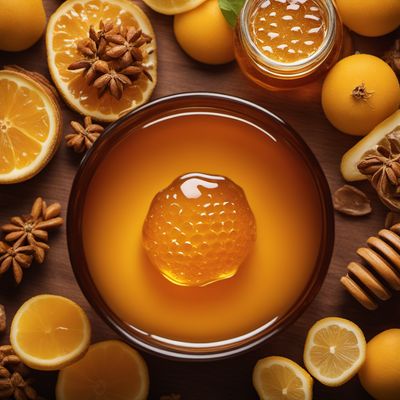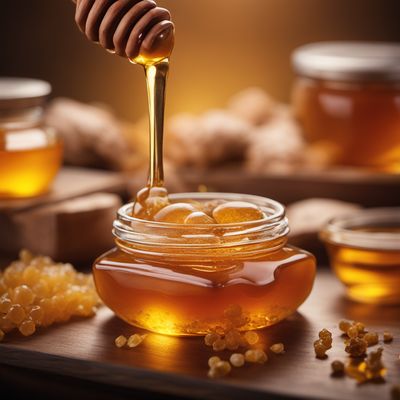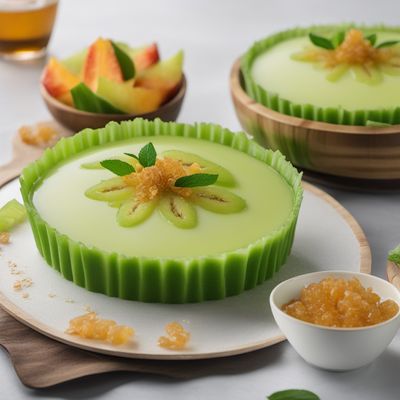
Ingredient
Honeydew honey
The Golden Nectar
Honeydew honey has a rich golden color and a distinctively robust and complex flavor. It has a sweet, yet slightly tangy taste with hints of caramel and molasses. The texture is smooth and creamy, making it a delightful addition to various culinary creations.
Origins and history
Honeydew honey has been enjoyed for centuries and is highly regarded for its unique flavor and medicinal properties. It is produced in regions where aphids or other sap-sucking insects thrive, such as Europe, North America, and parts of Asia. In some cultures, honeydew honey is considered a delicacy and is used in traditional desserts and beverages.
Nutritional information
Honeydew honey is a natural sweetener that contains various vitamins, minerals, and antioxidants. It is known for its antibacterial and anti-inflammatory properties. However, it is important to note that honey is high in calories and should be consumed in moderation. A tablespoon of honeydew honey provides approximately 60 calories and 17 grams of carbohydrates.
Allergens
There are no known allergens associated with honeydew honey. However, individuals with pollen allergies should exercise caution as honey may contain traces of pollen.
How to select
When selecting honeydew honey, look for jars that are labeled as pure honeydew honey or honeydew honeydewd. Check for a rich golden color and a thick, viscous consistency. Avoid honey that appears cloudy or crystallized, as this may indicate poor quality or adulteration.
Storage recommendations
To maintain the freshness and quality of honeydew honey, store it in a cool, dry place away from direct sunlight. Avoid exposing it to excessive heat or moisture, as this can cause fermentation or spoilage. Properly stored honeydew honey can last indefinitely.
How to produce
Honeydew honey is produced by bees that collect the sweet secretions of aphids or other sap-sucking insects. The bees transform the sugary secretions into honey through a process of enzymatic activity and evaporation. Amateur beekeepers can create suitable conditions for honeydew honey production by providing a habitat that supports aphids or other sap-sucking insects.
Preparation tips
Honeydew honey can be used as a natural sweetener in various culinary applications. It is particularly delicious drizzled over yogurt, pancakes, or fresh fruit. It can also be used in baking, marinades, salad dressings, and glazes for roasted meats. Additionally, honeydew honey is a popular choice for making mead, a fermented honey beverage.
Culinary uses
Honeydew honey is commonly used in traditional desserts and beverages in European and Asian cuisines. It is often incorporated into pastries, cakes, and cookies. In some cultures, it is enjoyed as a spread on bread or used as a topping for ice cream and yogurt. Honeydew honey is also a key ingredient in certain liqueurs and herbal remedies.
Availability
Honeydew honey is commonly produced in regions where aphids or other sap-sucking insects thrive. This includes countries in Europe such as Germany, Greece, and Spain, as well as regions in North America and Asia. It is also available in specialty stores and online retailers that offer a wide range of honey varieties.





